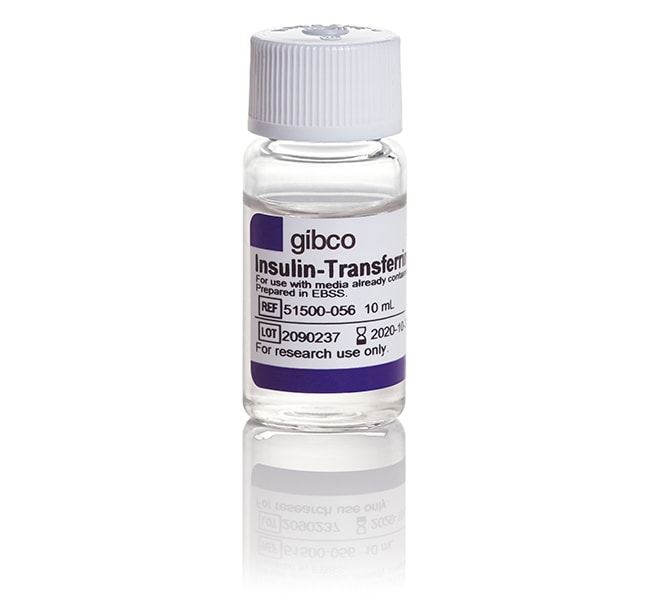Search Thermo Fisher Scientific
Insulin-Transferrin-Selenium-Ethanolamine (ITS -X) (100X)
| Catalog Number | Quantity |
|---|---|
| 51500056 | 10 mL |
Gibco™ Insulin,-Transferrin-Selenium-Ethanolamine (ITS-X) is used as a basal medium supplement in order to reduce the amount of fetal bovine serum (FBS) used to culture cells. ITS-X solution is routinely used, in combination with 2 to 4% FBS, to support cell types that require ethanolamine, such as bronchial epithelial cells.
Insulin promotes glucose and amino acid uptake, lipogenesis, intracellular transport, and the synthesis of proteins and nucleic acids. Transferrin is an iron carrier and may also help to reduce toxic levels of oxygen radicals and peroxide. Selenium, as sodium selenite is a co-factor for glutathione peroxidase and other proteins that is used as an anti-oxidant in media. Ethanolamine is a precursor of phospho-glycerides which are essential to the structure of the plasma membrane and cellular organelles.
The complete formulation is available.
cGMP Manufacturing and Quality System
Gibco™ ITS-X is manufactured at a cGMP compliant facility, located in Grand Island, New York. The facility is registered with the FDA as a medical device manufacturer and is certified to ISO 13485 standards.
Shipping conditions: Room temperature
Shelf life: 18 months from date of manufacture



